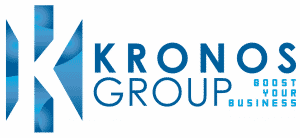What are the challenges of digital disruption when adopting AI in procurement?

Summary
With the urgency of businesses needing to adopt new ways of doing things and with the emergence of AI and other disruptive technology, procurement leaders are using digital tools to become more efficient and build their bottom line.
While adopting AI in procurement is the way of the future, its complexities can create challenges for business leaders.
A common misconception among employees is that AI will take over their jobs and make them obsolete. This can often create a lack of trust in AI where employees are not willing to make the changes needed to adopt AI.
Many believe that the complexity of AI systems and processes makes it difficult to implement them in a procurement setting, but with the right training and guidance, businesses can easily develop the competencies needed to make AI a driving force in the procurement function.
The unavailability of a specific plan is largely due to business leaders interpreting the technology as a system that operates by itself. It, however, requires trained and experienced professionals to overlook the process. Without a proper plan of action, businesses can face many challenges, including ineffective implementation of AI and—in some cases—a decrease in efficiency.
Faced with the shared goal of change, many procurement leaders and teams worldwide are trying to control digital disruption by creating a comprehensive and clear road map for the future.
Today, AI is reaching the corners of modern industry and the reality is that businesses must incorporate AI into their business operations to make lengthy processes much easier for employees.
Many industries have begun to incorporate AI into their everyday operations and procurement too has made the leap and started to incorporate AI in procurement operations.
As seen in many scenarios, making significant changes when implementing certain strategies can be time-consuming and difficult. It is due to this reason that procurement leaders must be aware of the challenges of AI that they may face along the way.
While these challenges can be managed with the right expertise and guidance, it is a good idea to analyse the challenges in advance so that you are aware of what you may be facing.
A lack of trust in AI
When discussing the topic of AI, it has long been believed by many that robotic processes are designed to take over human jobs and when implementing AI in procurement, many industries and industry leaders are facing this issue.
Workers are naturally sceptical of systems that require less commitment from their human predecessors, and trusting this technology can become difficult especially if they believe their position in the company is threatened.
If we delve deeper into this issue, many experts also believe that employees could be fearful that they could potentially lose control of their duties or the control they have over them.
There are many challenges and issues that procurement leaders could come to face and bear the responsibility of addressing before employees begin losing trust. By openly discussing the benefits of AI and explaining how AI could enhance performance rather than act as a threat, your employees could be swayed to welcome AI instead of questioning their place in an increasingly volatile world.
The complexity of AI systems and processes
One of the many reasons businesses, leaders, and employees reject AI is due to its perceived complexity. While there are complexities when implementing AI, it is no more complex than any other new technology or upgrades that are made in your existing systems.
AI is generally sought after as a way to assist the procurement process by providing organised and clean data, but as mentioned earlier, your business will still require human professionals who are capable of analysing, interpreting, and acting on the data.
As with any new technology, your employees will have to go through proper procurement training procedures to align with the AI technologies being introduced. In addition, many experts recommend re-tooled hiring where a new class of professionals who are experienced in AI can be brought in to work with your AI systems exclusively.
The unavailability of a specific plan
The benefits of AI cannot be overlooked. If there is no proper plan to implement AI in procurement, however, it can become ineffective and may even create more problems than solutions.
When adopting AI, many believe the misconception that AI will handle itself without any form of human intervention. The truth is that it needs to be directed, managed, and handled by an experienced professional.
This is why any business that is incorporating AI into its processes needs to have a detailed plan that covers the complete process from implementation to training and continuous system management.
Without a proper plan in place, businesses cannot capitalise on the full potential of AI and everything it can offer. The resources you dedicated to implementing AI could easily be wasted if your business does not have a long-term plan on how to start, continue, and grow your AI function.
Adopt AI in procurement or risk falling behind
Business leaders fear that digital disruption will leave their businesses behind if they do not adopt the right strategies quickly even though the digital wave is already in motion. To remain relevant, procurement needs to embrace AI as well as rethink its existing strategies to create a new organisational structure.
While AI is reimagining the role of procurement, three pillars drive excellence in procurement: team, category, and supplier excellence. Yet, winning in the contemporary digital world requires businesses to look at these fundamentals in a new way.




